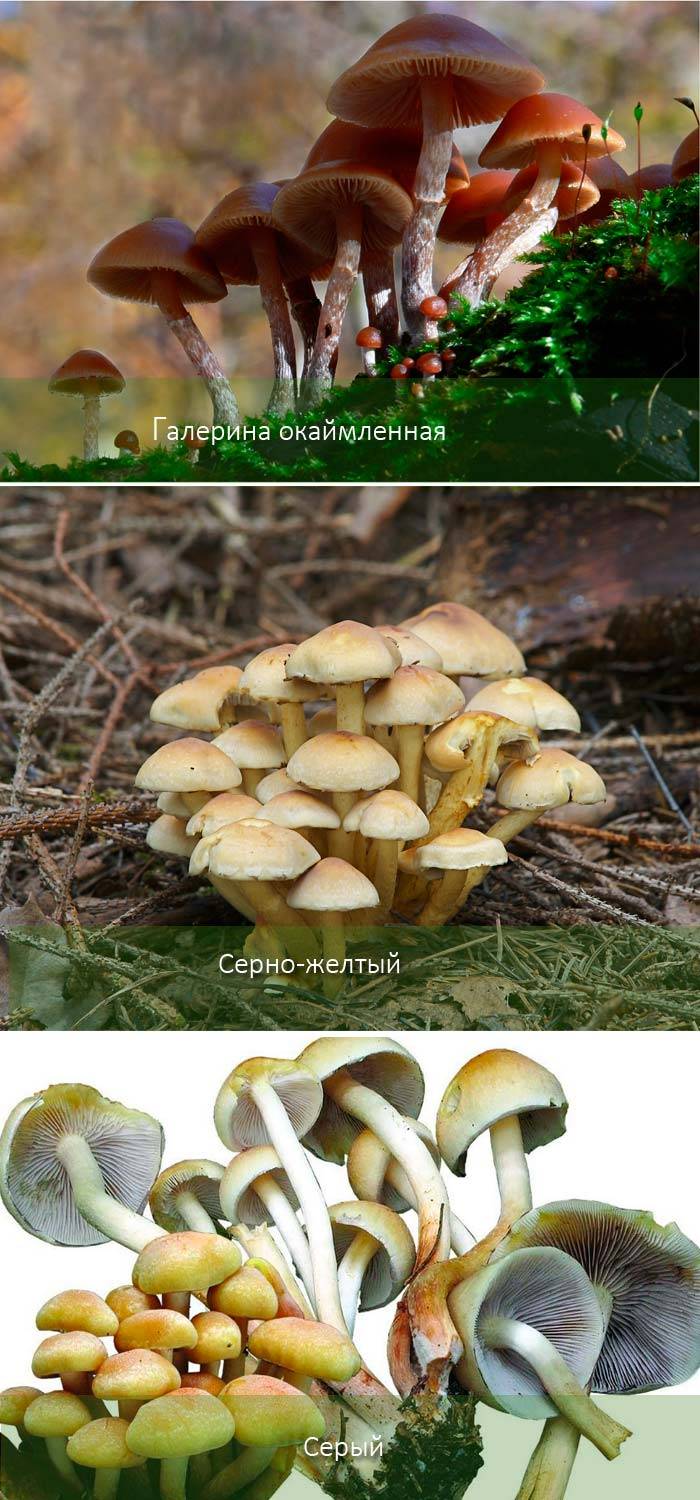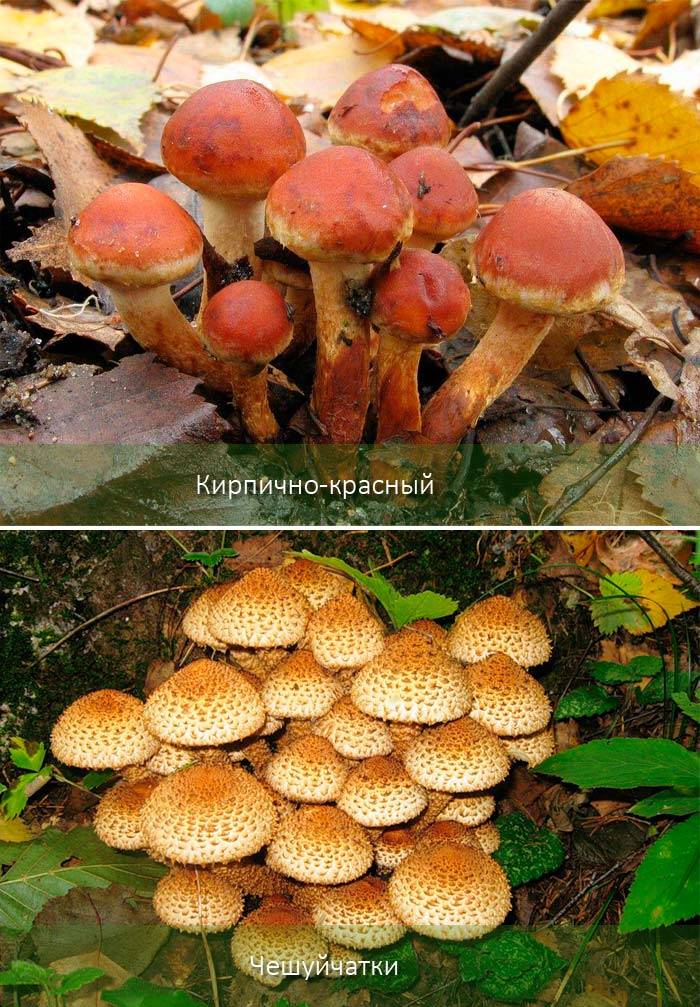Translated from the Latin mushroom - "bracelet". Not surprisingly, looking at the stump on which the mushrooms have sprouted, you will notice that the colony is located in the form of a ring.
There are several varieties of this mushroom:
- Summer honey agaric. Grows in colonies on broken or dead wood. It has excellent taste and is grown in huge quantities.
- Autumn honey agaric. It grows both on stumps and on broken or living trees. The leg reaches 10 cm in height, and 2 cm in diameter. Fruiting is phased, occurs every 2-3 weeks.
- Winter honey agaric. The fungus is usually found on rotten willow or poplar. The leg is 2 to 7 cm high. The hat is 2-10 cm. The growing season is late autumn-winter.
- Meadow honey agaric. It is found mostly in ravines, forest glades and on roadsides. The leg is quite thin, up to 10 cm high.
Description of summer mushroom
What do summer mushrooms look like?

- In young specimens, the cap has a convex shape; as it grows, it becomes flatter, and a characteristic tubercle remains in the middle. In diameter it reaches 3-6 cm. In dry weather, a yellow-brown tint prevails. In a period of high humidity, it becomes bright brown.
- The skin has a smooth texture and is covered with mucus.
- The leg is 7 cm high, 0.5 cm in diameter. It is quite dense, the color is light, it becomes darker towards the bottom.
- In the cap, the pulp is watery and very thin in structure, in the stem, on the contrary, it is dense.
- Young representatives have a thin ring. The plates grow very weakly to the stem, their color varies from light brown to brown, it depends on the age of the fungus.
Where and when do summer mushrooms meet
Most often, these mushrooms grow on hardwood trees. Favorite places are rotting wood, stumps and clearings by the river. Sometimes in mountainous areas, mushroom colonies can be found on spruce trees. A decent crop is harvested from one site. There are stumps completely covered with their colonies.
Another name is linden, as these mushrooms are often found on linden.
Do not look for these beauties only on stumps, they can grow near bushes and in various meadows.
Gathering summer mushrooms: If you live in an area with a warm climate, or go there, they can be found there all year round, in cold areas - from the second month of spring to mid-autumn. And then you ask: "Why are they called summer ones?" Because the peak of their growth season is in the middle of summer.
When collecting, you need to be as careful as possible. Cut gently with a sharp knife. It is not recommended to collect in places located near roads and landfills. These mushrooms, like sponges, absorb, in addition to useful elements, also harmful substances, and sometimes poisonous ones. All kinds of herbicides, heavy metals, radioactive isotopes and even mercury. It is also best not to pick mushrooms in the city park.
The difference between summer agarics and false doubles
Summer honey agaric is often confused with mushrooms similar to it.
A mistake can become fatal: from an inedible dish to severe poisoning.
The most dangerous thing - instead of edible honey mushrooms, dial Galerina bordered. It is almost impossible to distinguish them: the same color, identical shape and even a ring on the leg. Only an experienced mushroom picker will understand that this is Galerina in the form of disputes.

Bordered gallerina is poisonous. As well as a pale grebe, it is fatal, if you do not help a person in time, a fatal outcome is possible. You can meet in coniferous forests, starting from May and until deep frosts. Usually grows from 1 to 3 mushrooms, in contrast to honey agarics growing in colonies.
You should be extremely careful, Galerina can sprout one among other honey agarics.
False mushroom is a poisonous mushroom that exists in two subtypes: gray and sulfur-yellow. A few hours after taking them, severe vomiting and dizziness appear.
Less dangerous doubles include:
- brick red false honey, not poisonous;
- scales are inedible mushrooms.
When collecting, be extremely careful, carefully inspect each mushroom. If there are any suspicions, it is better not to frustrate.
One more tip by the way. Collect mushrooms in baskets, not in a bag, otherwise, under the influence of excess moisture, they will turn into a caked ball.
The composition of summer mushrooms and their calorie content
The energy value of these mushrooms is very small and amounts to 17-22 kcal per 100 g. If you are fasting or on a diet, then this dish is for you.
Nutritional value per 100 g of freshly cut summer mushrooms:
- water 90 g;
- carbohydrates 0.6 g;
- proteins 2.3 g;
- fat 1.1 g;
- dietary fiber 5.1 mg (25.5% DV).
Honey mushrooms contain vitamins B1, B2, C11 and PP. By eating 100 g, we get such minerals as: magnesium (5% of the daily value), potassium (16%), phosphorus (6%) and iron (4.3%). The content of trace elements will be: zinc (9.1% of the daily value), copper (16.1%), nickel (31.2%) and chromium (31.7%).
The harm and benefits of using summer mushrooms
Eating honey agaric has a beneficial effect on the work of the heart. The pulp can be used to treat staphylococcus aureus.
It is contraindicated to use for acute gastritis, ulcers, colitis and cholecystitis. And also up to 7 years old.
Summer mushrooms are quite aromatic and pleasant to the taste.
Heat treatment is required. This is especially important if you are unsure of where the mushrooms have gathered.
After sorting out the mushrooms, throwing out all the suspicious and wormy ones, soak them in water for 30 minutes. When you start boiling, drain the first broth with the foam, add fresh water to it. Place the mushrooms in a colander and rinse with water. Use as you wish, adding to soup or salad, fry with potatoes, or put in a pie. You can also dry mushrooms for the winter, or pickle. Juicy and crunchy mushrooms are a delicious appetizer to the table.
Freezing is the best way to retain all the nutrients.
Summer mushrooms at their summer cottage
In order not to go to the forest for mushrooms, they began to grow on their own plots. Inoculation (planting of mycelium) occurs due to the transfer of a small area of wood with mycelium into previously prepared holes in the stumps.
The diameter should not be large, optimally 0.8 cm. The mycelium that you placed in the hole should be covered with moss. The infection process must be carried out in the fall or spring. Fruiting is on average 7 years.
Alternatively, sprouting on wooden blocks is used anywhere in the summer cottage. To do this, prepare logs from any hardwood, freshly cut birch is best suited. Place the mycelium in them and leave for 4 months in a room with a temperature of + 15 ... + 20 ° C, and a humidity level of 85%. If you use the cellar or basement, then the chance that the mycelium will take root will increase significantly.
The care process is extremely simple - it is necessary to protect the mushrooms from direct sunlight, and to ensure a sufficient level of humidity. Keep in mind! Summer mushrooms instantly grow beyond the stump. The soil under the mushrooms is severely depleted. It is recommended to remove the topsoil every 3-4 years and replace it with a new nutritious one.









